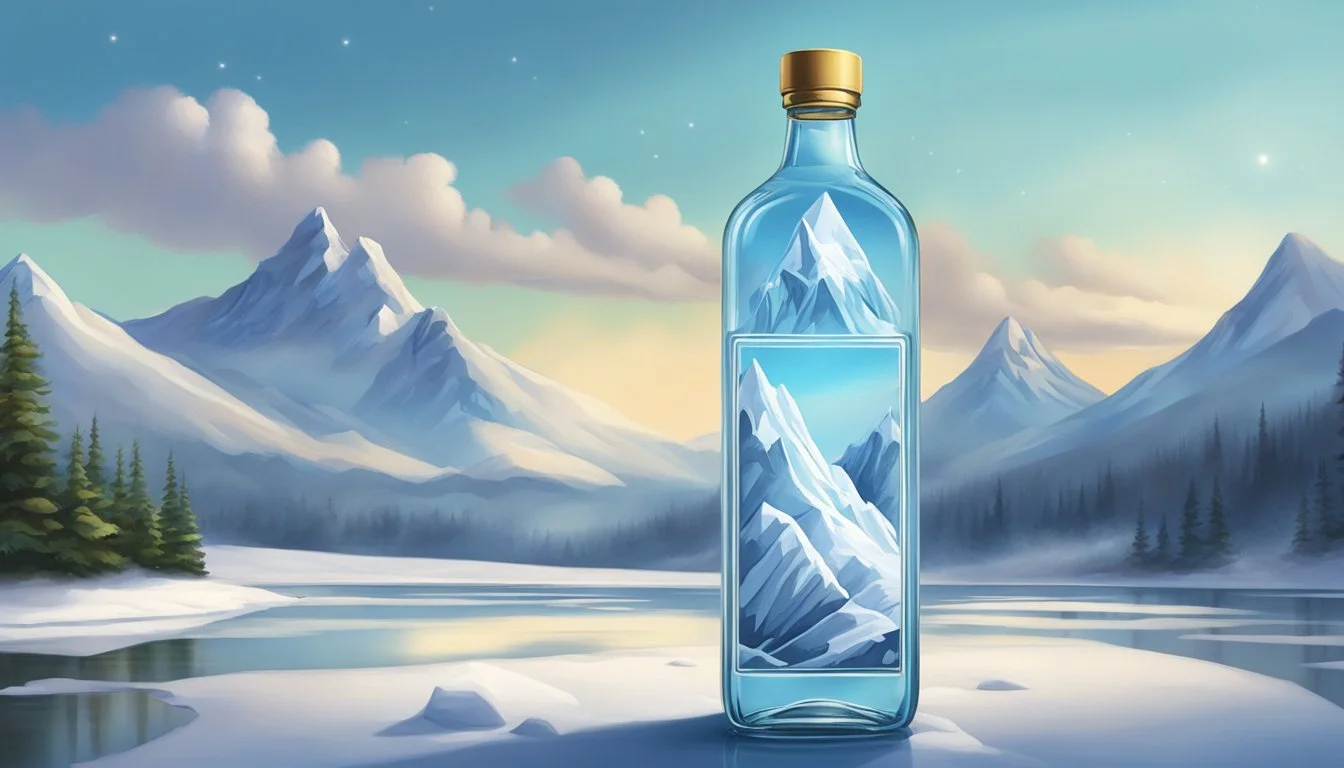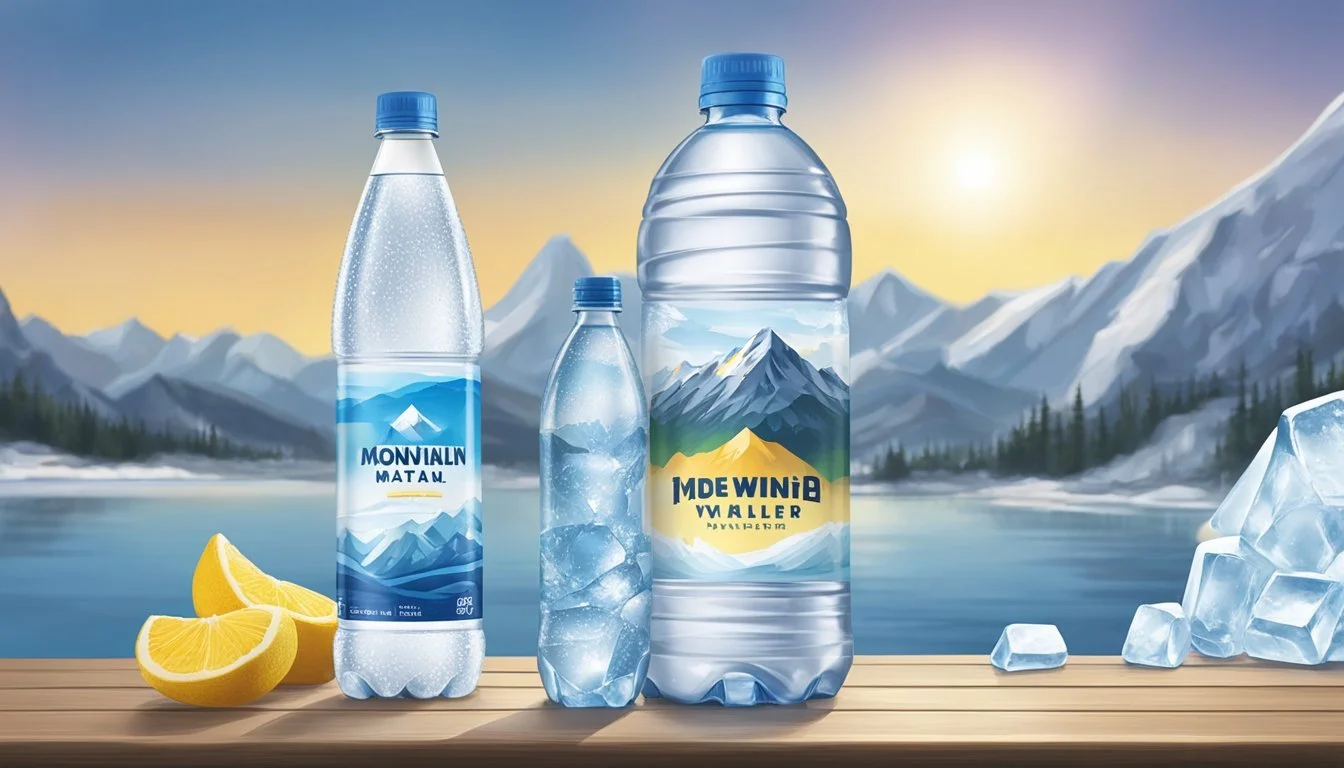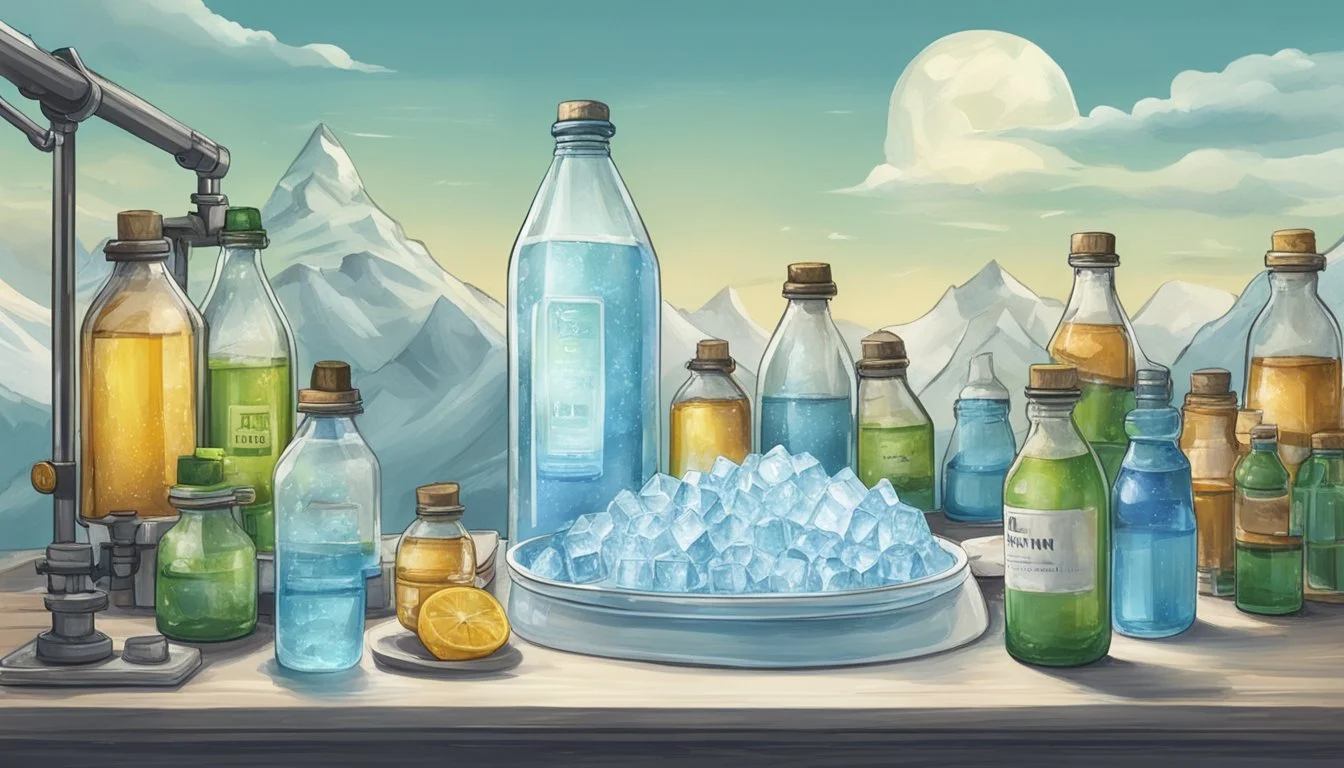Ice Mountain vs. Big Win
Comparing Bottled Water Quality and Value
Bottled water is a staple for many consumers seeking convenience and reliable hydration. Two prominent brands often compared are Ice Mountain and Big Win. Ice Mountain, known for its multi-step filtration process, prides itself on delivering water from natural springs, providing a refreshing and pure taste. For those who prioritize the purity and taste of their water, Ice Mountain stands out as a premium option.
Big Win, another popular brand, offers a more accessible choice for everyday hydration. While it might not boast the same stringent filtration processes as Ice Mountain, Big Win aims to deliver clean and efficient hydration at a more affordable price point. Consumers looking for a cost-effective and reliable bottled water option might find Big Win to be a suitable alternative.
Comparing these brands, Ice Mountain emerges as the preferred choice for those who value the pure, crisp taste derived from natural springs. Conversely, Big Win caters to individuals who seek practical hydration without breaking the bank. Both options have their merits, catering to different preferences and needs, allowing consumers to choose based on what they value most in their bottled water.
Understanding Bottled Water
Bottled water comes from a variety of sources, undergoes strict regulations for safety, and is available in different types to meet varying consumer needs.
Origin and Source of Bottled Water
Bottled water can originate from natural springs, municipal water supplies, or other protected water sources. Natural spring water is often favored for its purity and mineral content, sourced directly from underground springs.
Municipal water, on the other hand, is treated and purified tap water. Companies often employ additional filtration methods to enhance its quality. The source of the water impacts its taste, mineral content, and overall consumer preference.
Regulations and Safety
Bottled water is subject to stringent regulations and safety standards to ensure it is safe for consumption. In the United States, the Food and Drug Administration (FDA) regulates bottled water, ensuring it meets standards similar to those for public drinking water.
Bottled water companies must adhere to specific guidelines for processing, bottling, labeling, and distribution. Safety measures often include multiple stages of filtration and rigorous testing for contaminants like lead, chlorine, and bacteria.
Bottled Water Types
There are several types of bottled water available, each with distinct characteristics:
Spring Water: Sourced from underground springs, often rich in natural minerals.
Mineral Water: Contains a specific level of dissolved minerals from its source.
Purified Water: Undergoes processes like distillation or reverse osmosis to remove impurities.
Sparkling Water: Carbonated for a bubbly texture, can be from any water source but is fizzy due to carbonation.
Consumers can choose based on taste, mineral content, and personal preferences.
Brand Profiles
Ice Mountain and Big Win are two distinct brands of bottled water, each with unique origins and processes that set them apart. Understanding these differences is key to determining which might be better for individual preferences.
Ice Mountain: Natural Spring from the Midwest
Ice Mountain sources its water from natural springs located in the Midwest. The brand prides itself on offering 100% natural spring water. The company emphasizes the purity and natural mineral content of its water, which comes from springs in Michigan, primarily Evart and Stanwood.
Ice Mountain undergoes essential filtration steps to remove large particles while preserving the natural mineral profile. Consumers often appreciate the crisp, clean taste resulting from these processes. The natural origin of the springs and the minimal processing ensure that the water retains its natural properties.
Big Win: Purification and Filtration Processes
Big Win focuses on providing purified bottled water using advanced filtration methods. Their process includes reverse osmosis, a technique that removes impurities, including minerals, bacteria, and other contaminants.
Big Win's multi-stage filtration process guarantees high purity levels and excellent taste. The filtration typically involves carbon filtration and ultraviolet light treatment after reverse osmosis, ensuring the water is exceptionally clean. This approach appeals to consumers who prioritize purity and a neutral taste profile in their bottled water.
Packaging and Environmental Impact
The choice of packaging material plays a significant role in the environmental impact of bottled water. This comparison will evaluate the packaging choices and the resulting environmental footprint for Ice Mountain and Big Win bottled water brands.
Plastic vs Sustainable Alternatives
Ice Mountain primarily uses plastic bottles made from petrochemicals. While these plastic bottles are widely recyclable, the actual recycling rates remain low, contributing to plastic pollution.
Big Win offers an alternative approach with some of its products, using recycled plastic materials and introducing more sustainable packaging options. These alternatives aim to reduce reliance on virgin plastic and promote better recycling habits among consumers.
Environmental Footprint of Brands
Ice Mountain's reliance on traditional plastic bottles means a higher carbon footprint and significant CO2 emissions during production. For every 50 oz of bottled water produced, the process emits a considerable amount of CO2, exacerbating environmental issues.
Big Win, focusing on eco-friendly materials, seeks to lower its carbon footprint. By incorporating recycled plastic and exploring other sustainable resources like paper cartons, Big Win aims to minimize environmental damage and promote sustainability. This approach is increasingly vital as consumers become more conscious of their environmental impact.
Health and Hydration
Ice Mountain and Big Win bottled waters offer varying health benefits and hydration qualities based on their mineral content and processing methods. Understanding the differences in these areas can help determine which water might better suit individual needs.
Minerals and Electrolytes
Ice Mountain water is sourced from natural springs, maintaining a balance of essential minerals such as calcium, magnesium, and potassium, which can contribute positively to health.
Big Win water, while purified and safe, may lack the naturally occurring minerals found in spring water. Essential minerals like sodium and calcium can influence electrolyte balance, vital for muscle function and cellular processes.
Although both types of water are hydrating, the specific mineral profile of Ice Mountain may offer additional benefits for those seeking a more naturally mineral-rich option.
Bottled Water vs Tap Water
When choosing between bottled water and tap water, the source and treatment methods are crucial. Ice Mountain and Big Win undergo strict filtration processes to ensure purity and taste.
Tap water, depending on location, might contain higher levels of chlorine and other chemicals used for disinfection. However, tap water often undergoes regular quality assessments and is easily accessible.
For some, the convenience and perceived cleanliness of bottled water make it a preferred option. In contrast, others might value the cost-effectiveness and reduced environmental impact of drinking tap water.
Health Impact of Hydration
Adequate hydration is essential for maintaining health. Both Ice Mountain and Big Win provide necessary hydration.
Hydration supports various bodily functions, including digestion, circulation, and temperature regulation. Mineral-rich waters like Ice Mountain can aid in maintaining electrolyte balance, which is crucial for avoiding issues like muscle cramps and fatigue.
Big Win, although potentially less mineral-dense, still provides vital hydration. Regular water intake helps maintain skin health, cognitive function, and overall physical performance.
Proper hydration habits, paired with a balanced diet, form the foundation of healthy living, irrespective of the specific water brand chosen.
Taste and Water Quality
Ice Mountain and Big Win bottled water differ significantly in taste and water quality due to their unique filtration methods and sources. Below, their taste and quality aspects are examined to provide a clear understanding.
Factors Affecting Taste
Taste in water is influenced by its mineral content and source.
Ice Mountain is sourced from Midwest springs and is known for its natural taste with a distinct mineral profile that many find refreshing. Big Win, on the other hand, is purified water often produced through methods like reverse osmosis, resulting in a very neutral taste.
Minerals such as calcium, magnesium, and sodium can affect water's taste. Ice Mountain contains these naturally occurring minerals, giving it a crisp flavor. Big Win lacks substantial mineral content, making the taste sometimes perceived as flat or bland.
Consumer preferences play a significant role. Some prefer the clean, crisp taste of Ice Mountain, while others might opt for the simple, straightforward profile of Big Win.
Purity and Quality Assessments
Ice Mountain follows a multi-step filtration process, ensuring high standards of purity. This process includes initial screening to remove large particles and subsequent steps to eliminate finer impurities without stripping essential minerals. This attention to purity guarantees consistent quality for consumers.
Big Win employs purification methods like reverse osmosis, effectively removing impurities to deliver pure water. This process, while thorough, tends to remove minerals that contribute to water’s taste and potential health benefits.
Quality-wise, Ice Mountain adheres to rigorous natural spring water standards, maintaining its mineral-rich content. Big Win focuses on ensuring the absence of contaminants, aiming for a clean and safe product without the distinct mineral taste.
Consumer Choices and Convenience
When deciding between Ice Mountain and Big Win bottled water, factors like individual preferences, availability, and health considerations play a crucial role.
Different Needs for Different Consumers
Different consumers have distinct preferences when choosing bottled water. Ice Mountain, known for its use of plastic bottles, appeals to those seeking lightweight and cost-effective options.
For health-conscious consumers, the source and filtration process of the water might be a deciding factor. Ice Mountain sources water from natural springs and employs a multi-step filtration process. Big Win often focuses on accessibility and budget-friendly options, catering to a broader audience.
Accessibility and Availability
The availability of bottled water brands can significantly influence consumer choices. Ice Mountain has a strong presence in various retail outlets, making it easily accessible.
Big Win, typically found in many supermarket chains, ensures affordability and convenience for price-sensitive consumers. Both brands emphasize widespread distribution, ensuring that they can meet the needs of diverse consumer groups across different regions and retail environments.
Innovation in Bottling
Innovative bottling methods have become a key differentiator in the competitive bottled water market, focusing on both technological advancements in water purification and the emergence of eco-friendly packaging solutions.
Technological Advancements in Water Filtration
Ice Mountain employs a multi-step filtration process designed to ensure maximum purity. This includes initial screening to remove large particles, followed by advanced methods like reverse osmosis and carbon filtration. These methods help achieve high levels of purification, ensuring the water is free from contaminants.
Big Win utilizes the Hydro-7™ purification system, also incorporating reverse osmosis and carbon filtration, to enhance the water’s purity. The Hydro-7 process targets potential impurities, resulting in bottled water that meets rigorous quality standards. Both brands emphasize the importance of filtering for optimal alkalinity levels to improve taste.
Emergence of Eco-Friendly Packaging
Ice Mountain traditionally uses 100% plastic bottles made from petrochemicals; these are widely recyclable, though recycling rates remain low. Recent efforts have aimed at increasing the recycled content in their packaging to reduce environmental impact.
Big Win has adopted sustainable packaging options such as bottles made from recycled materials and biodegradable alternatives. These eco-conscious initiatives reflect a broader industry trend towards reducing plastic waste. By exploring packaging innovations like boxed water or plant-based plastics, they aim to minimize their carbon footprint and appeal to environmentally aware consumers.
Comparative Analysis
Exploring Ice Mountain and Big Win bottled water highlights differences in filtration processes, taste, and quality.
Ice Mountain vs Big Win: A Side-by-Side Comparison
Ice Mountain uses a thorough multi-step filtration process, starting with screening to eliminate large particles. This focus on natural spring water often reflects in its cost, positioned slightly higher in the market.
Big Win, meanwhile, is known for its affordable pricing. It typically sources water locally, and while it employs adequate filtration, it is often seen as a budget-friendly choice without a strict emphasis on spring water origins.
Price: Ice Mountain: $3.50-$5.00 (24-pack, 16.9oz bottles). Big Win: Generally lower.
Source: Ice Mountain: Natural springs. Big Win: Various local sources.
Filtration: Ice Mountain: Multi-step. Big Win: Basic filtration.
What Experts Say
Water sommeliers and other experts often rate Ice Mountain higher due to its consistent taste and dedication to purity. They highlight its balanced mineral content and refreshing quality. Consumer reviews on platforms like Twitter also echo these sentiments, praising its clean and crisp taste.
Big Win, on the other hand, receives mixed reviews. Experts appreciate its affordability but note inconsistencies in flavor and quality. Some users find it satisfactory for daily consumption, particularly given its low cost, but it seldom ranks as highly as its competitors.
Expert Opinions: Ice Mountain: Higher rankings, praised for taste and quality. Big Win: Mixed reviews, valued for affordability.
Conclusion: The Bottom Line
In comparing Ice Mountain and Big Win, both brands offer their own strengths in bottled water.
Quality: Ice Mountain and Big Win both provide natural spring water. Ice Mountain sources from Midwest springs, while Big Win is positioned as a reliable option with a consistent taste.
Health Benefits: Ice Mountain's multi-step filtration process ensures cleanliness and purity. Big Win aims to eliminate impurities, making both brands suitable for maintaining overall health.
Sustainability: Ice Mountain focuses on environmentally friendly practices, emphasizing the use of recycled materials in packaging. Big Win also shows commitment to sustainability, although details varied by product.
Consumer Decision: Choosing between the two will depend on individual preferences. Ice Mountain may appeal to those seeking a refined mineral composition and wide availability. Big Win might attract consumers desiring a budget-friendly option with consistent quality.
Both brands strive to meet customer expectations.
Tips: When selecting bottled water, consider factors such as taste preference, environmental impact, and brand reputation. Always check sourcing and processing details for additional insights into the quality of the water you're consuming.
More About Ice Mountain
Core Hydration vs Ice Mountain: Which Bottled Water is Better?
Ice Mountain vs Aqua Carpatica: Which Bottled Water is Better?
Ice Mountain vs Cascade Mountain: Which Bottled Water is Better?
Ice Mountain vs Crystal Geyser: Which Bottled Water is Better?
Ice Mountain vs Crystal Lake: Which Bottled Water is Better?
Ice Mountain vs Essence pH10: Which Bottled Water is Better?
Ice Mountain vs Hawaii Volcanic: Which Bottled Water is Better?
Ice Mountain vs Hawaiian Springs: Which Bottled Water is Better?
Ice Mountain vs Icelandic Glacial: Which Bottled Water is Better?
Ice Mountain vs Kirkland Signature: Which Bottled Water is Better?
Ice Mountain vs Liquid Death: Which Bottled Water is Better?
Ice Mountain vs Mountain Valley Spring Water: Which Bottled Water is Better?
Ice Mountain vs Nestle Pure Life: Which Bottled Water is Better?
Ice Mountain vs Poland Spring: Which Bottled Water is Better?
Ice Mountain vs Proud Source: Which Bottled Water is Better?
Ice Mountain vs Purely Sedona: Which Bottled Water is Better?
Ice Mountain vs Richard's Rainwater: Which Bottled Water is Better?
Ice Mountain vs San Pellegrino: Which Bottled Water is Better?
Ice Mountain vs Simple Truth: Which Bottled Water is Better?
Ice Mountain vs Solan de Cabras: Which Bottled Water is Better?
Ice Mountain vs Talking Rain AQA: Which Bottled Water is Better?
Ice Mountain vs Whole Foods 365: Which Bottled Water is Better?
Ice Mountain vs Whole Foods Italian Still Mineral water: Which Bottled Water is Better?
More About Big Win
Big Win vs Kirkland Signature: Which Bottled Water is Better?
Icelandic Glacial vs Big Win: Which Bottled Water is Better?
Mountain Valley Spring Water vs Big Win: Which Bottled Water is Better?
Richard's Rainwater vs Big Win: Which Bottled Water is Better?
Whole Foods Italian Still Mineral water vs Big Win: Which Bottled Water is Better?







